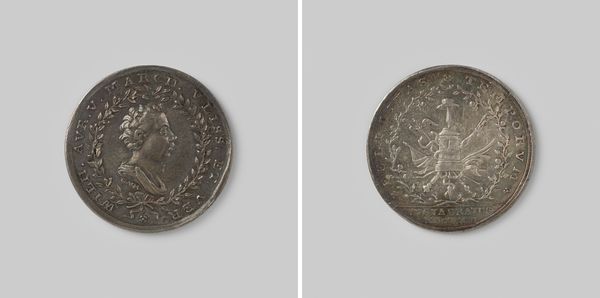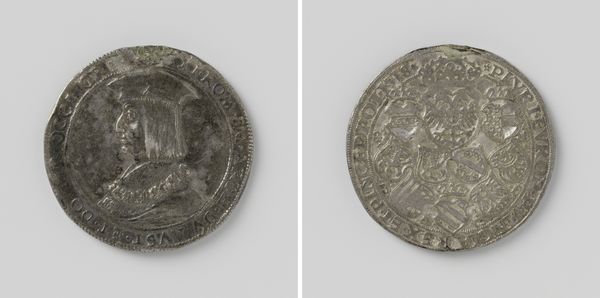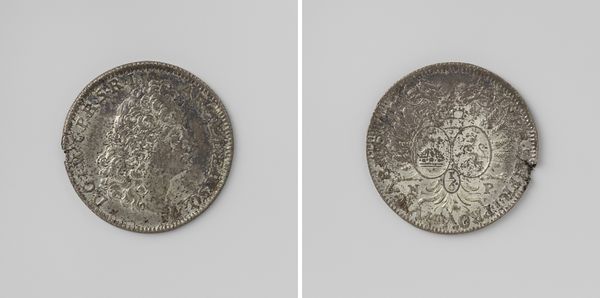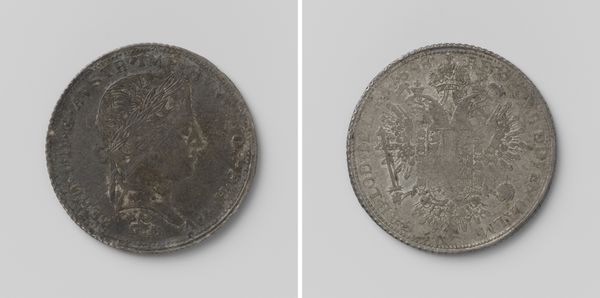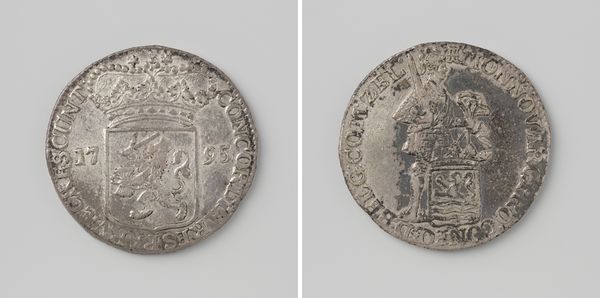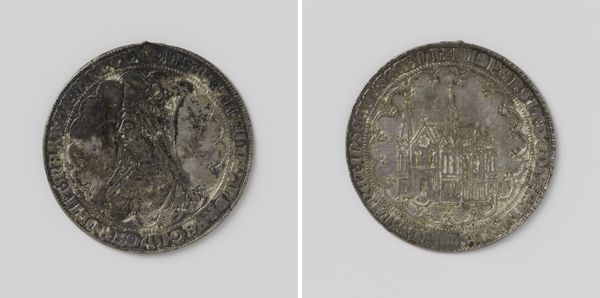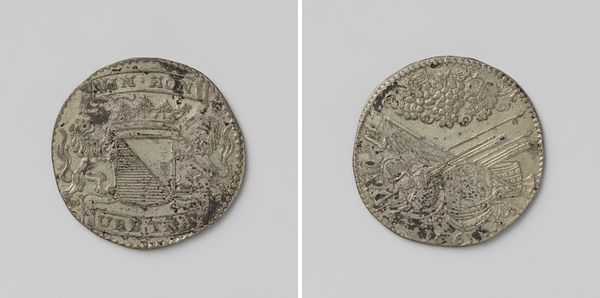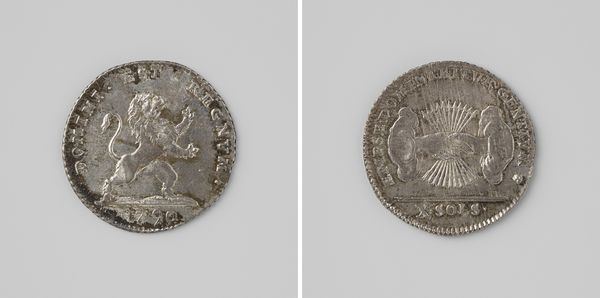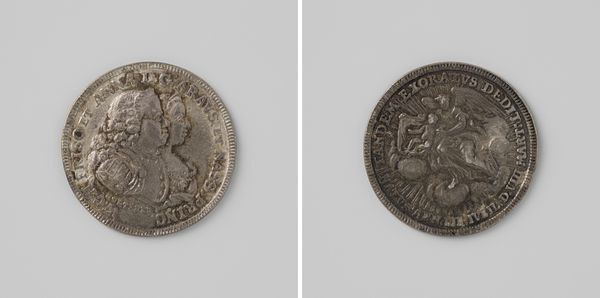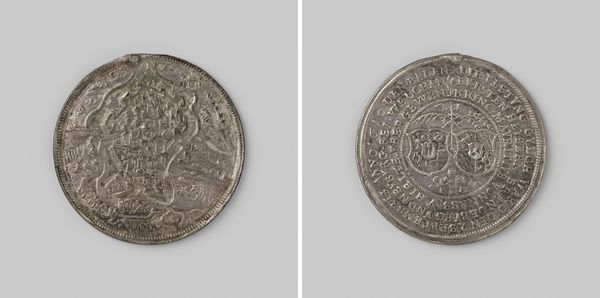
silver, print, metal, engraving
#
portrait
#
silver
# print
#
metal
#
11_renaissance
#
engraving
#
realism
Dimensions: diameter 4.5 cm, weight 36.90 gr
Copyright: Rijks Museum: Open Domain
Curator: Well, here we have "Maximiliaan I, Duits keizer," an engraving created in 1505 by Benedict Burgkart. It is fashioned in silver metal using a print. Editor: The overwhelming impression for me is…severity. A regal but unyielding depiction of power. The circular shape encloses him, almost like he's trapped within the bounds of his own authority. Curator: That's perceptive. This piece arrives amidst a pivotal moment in the Holy Roman Empire. Consider how Maximilian used visual imagery to cultivate a specific political persona, both of ruler and of military commander. The deliberate distribution of prints like these consolidated Habsburg power through strategic representation. Editor: Absolutely. We see here, through the deliberate use of silver, the crown, and even the sternness in his gaze, the embodiment of patriarchal dominance made tangible. Who gets remembered? Whose face is etched into our consciousness through circulated material? Curator: Engravings, at that time, democratized imagery in a sense. Prior, portraiture of rulers was solely the domain of painting for the wealthy. Printmaking made this controlled image accessible to wider audiences, influencing public perception on a considerable scale. How else might this portrait function? Editor: To my mind, this image normalizes and reinforces the structure of a classist society. Though appearing to make the portrait accessible to all, the image simultaneously strengthens Maximilian's control through dissemination of state propaganda and reifying his status at the top of a strict hierarchy. The semiotics of the medium and context point to these power dynamics. Curator: You’re right, that balance between wider availability and its intended impact is crucial. When assessing this image, it also allows us to consider the role and perspective of the artist, Benedict Burgkart, as someone possibly complicit or invested in propagating power structures of the time. Editor: Considering our current socio-political climate, the ability to scrutinize and understand these modes of visual rhetoric feels increasingly important. Curator: Agreed. Examining works like this allows for ongoing deconstruction of inherited systems of power in art.
Comments
No comments
Be the first to comment and join the conversation on the ultimate creative platform.
